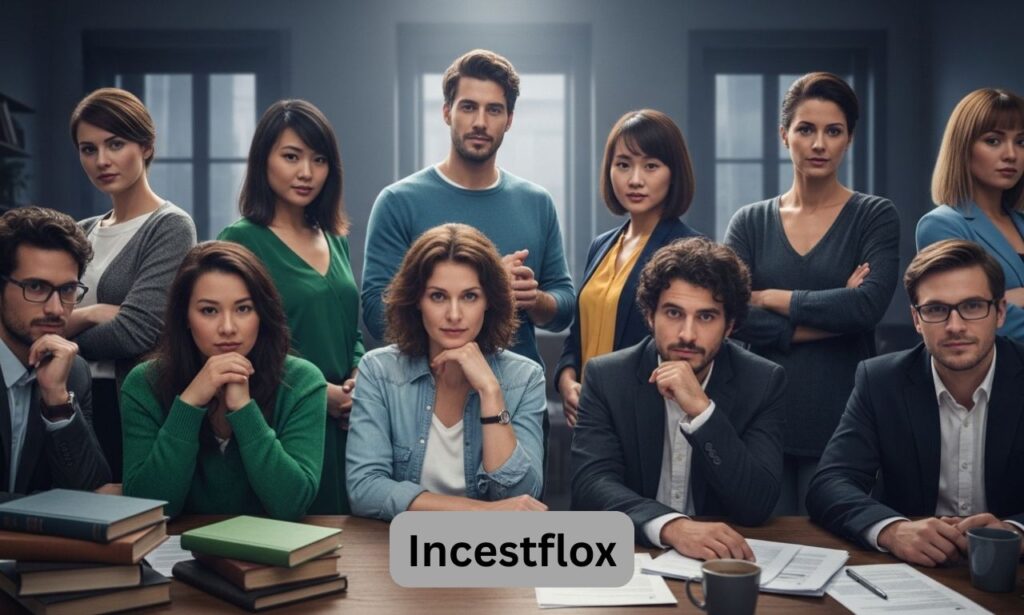Incestflox is a term that has emerged in discussions surrounding incestuous relationships, sparking intrigue and controversy alike. It encapsulates the complex blend of taboo, cultural perspectives, and social implications that arise when family ties blur into romantic or sexual connections. As society evolves, understanding these dynamics becomes crucial—not only for addressing the stigma but also for exploring the psychological and legal ramifications involved. This exploration will shed light on how different cultures perceive incest and its impact on individuals caught in its web. Prepare to delve deeper into this sensitive yet important topic as we unravel what lies beneath the surface of incestflox.
What is Incestflox?
Incestflox is a term that refers to the complex interplay of incestuous relationships within various cultural frameworks. The concept encapsulates not only the act itself but also the societal responses and repercussions that arise from such connections.
At its core, incestflox challenges conventional notions of family, love, and morality. It invites discussions about boundaries and acceptable behavior in human relationships.
The phenomenon raises questions about affection versus taboo, often blurring lines that society has drawn over centuries. Different cultures perceive these relationships uniquely, leading to diverse interpretations and implications.
This term encourages exploration into how power dynamics influence familial bonds. As we delve deeper into its significance, it becomes clear that understanding incestflox requires an examination of historical context as well as contemporary views on intimacy within families.
Historical and Cultural Context of Incest
Throughout history, incest has been perceived differently across various cultures. In some ancient societies, such as those in Egypt and Hawaii, marrying close relatives was not only accepted but often encouraged to preserve royal bloodlines or maintain land within a family.
Conversely, many modern cultures impose strict taboos against incest. Religions and societal norms have shaped these views, emphasizing the dangers associated with genetic defects that can arise from inbreeding.
Literature and folklore also reflect society’s attitudes toward incest. Many stories portray it as a tragic flaw or moral failing, highlighting its complexities.
In contemporary discourse, discussions about incest often involve ethical considerations surrounding consent and power dynamics. The evolution of cultural perspectives continues to influence how relationships are viewed today.
The Taboo of Incest and its Impact on Society
The taboo surrounding incest has deep roots in societal norms and values. It often evokes strong emotional reactions, driven by cultural beliefs about family structure and morality.
This stigma plays a crucial role in shaping perceptions of familial relationships. Many cultures enforce strict boundaries to protect the integrity of family ties. Violating these boundaries can lead to severe social ostracism.
The impact on individuals involved is significant. Those who engage in incestuous relationships may face isolation or psychological distress due to societal judgment. The fear of exposure amplifies feelings of guilt and shame.
Moreover, this taboo influences legal frameworks worldwide, as laws against incest reflect society’s collective stance on acceptable behavior within families. Such regulations aim to safeguard vulnerable individuals while reinforcing cultural standards that define appropriate kinship dynamics.
Psychological Effects on Individuals Involved in Incestuous Relationships
Engaging in an incestuous relationship can lead to profound psychological turmoil for those involved. Individuals often grapple with conflicting emotions, including shame, guilt, and confusion. These feelings can stem from societal stigma and internalized beliefs about family bonds.
Victims might experience anxiety or depression as they navigate their complicated emotional landscape. Trust issues may arise, complicating future relationships outside of the familial context.
On the other hand, perpetrators may face intense self-loathing and fear of judgment from society. This cycle creates a toxic environment that hinders personal growth and healing.
Both parties may struggle with identity crises as they question their values and beliefs about love and intimacy. Such experiences demand attention to mental health needs through therapy or support groups tailored for unique situations like this one.
Legal Perspectives and Consequences of Incestuous Relationships
Laws surrounding incestuous relationships vary widely across different jurisdictions. In many countries, such relationships are criminalized due to concerns about offspring and social morality.
Penalties can be severe, ranging from fines to lengthy prison sentences. The stigma associated with these acts often leads to significant legal repercussions for those involved.
In some regions, even consensual adult relationships between relatives may face scrutiny. This is especially true if there’s a perceived power imbalance or coercion involved.
Additionally, legal battles may arise concerning custody of children born from such unions. Courts tend to prioritize the welfare of minors, which adds another layer of complexity.
Advocacy groups sometimes challenge these laws as outdated or overly harsh. They argue that consent should play a crucial role in determining legality, sparking ongoing debate in society and lawmaking bodies alike.
Addressing the Issue: Mental Health and Support for Victims and Perpetrators
Addressing the mental health needs of those involved in incestflox situations is critical. Victims often experience deep emotional scars that can last a lifetime. They may face feelings of isolation, shame, and confusion.
Support systems are essential for recovery. Therapy offers a safe space to process trauma and rebuild self-esteem. Trained professionals can provide coping strategies tailored to individual experiences.
On the other hand, perpetrators also require attention. Understanding their motives and behaviors is crucial for preventing future incidents. Mental health interventions can help them confront underlying issues.
Community awareness plays a vital role as well. Open conversations about incestflox might reduce stigma and encourage victims to seek help without fear of judgment. Educational programs can equip society with better tools for addressing these complex dynamics.
Creating safe environments fosters healing for both parties involved in such relationships, paving the way toward healthier futures.
Conclusion
Incestflox is a complex and multi-dimensional topic that carries significant cultural, psychological, and legal weight. The stigma surrounding incest has deep roots in historical contexts, shaping societal norms across various cultures. This taboo not only affects individuals directly involved but also reverberates through families and communities.
The implications of incestuous relationships extend beyond personal experiences; they raise questions about morality, legality, and mental health support systems. Individuals entangled in such situations often face profound psychological challenges. Understanding these dynamics can lead to better support for both victims and perpetrators.
As society continues to grapple with the intricacies of human relationships, creating open dialogues about difficult subjects like incestflox becomes essential. By fostering awareness and providing resources for those affected, we take steps toward healing while challenging existing stigmas around this sensitive issue.






